Denemek ALTIN - Özgür
LEARNING TO HEAR
Muse Science Magazine for Kids
|May/June 2021
With cochlear implants

When Elexis Blake was an 8-month-old baby, her grandmother noticed something unusual. Elexis didn’t seem to notice sounds, like a dog barking.
“She shook a jar full of pennies behind my head,” says Elexis, now 25. “I didn’t turn. But I was very interested in the jar when she showed it to me.”
Her family took Elexis to an audiologist (a medical specialist who can test for hearing problems). The audiologist told her parents that she was profoundly deaf in both ears.
When Are Hearing Problems Diagnosed?
Most babies get a hearing check soon after they are born. If the test detects hearing problems, parents are told to visit an audiologist for more tests.
When Elexis had her first hearing test, the doctor may have thought that her results would improve in time. That was not the case.
“My mom was sad that I couldn’t hear,” says Elexis. “She went to the library, got American Sign Language (ASL) books, and started signing with me at 8 months old.”
Her mom even took classes at a nearby university and became a sign language interpreter.

Language and the Brain
Babies who can hear start learning spoken language before they’re even born! The part of the brain that makes sense of sounds and language is called the auditory cortex. It’s connected to the auditory nerve. Kids and teens learn languages more easily and rapidly than adults. Researchers believe that the language area of the brain fills with visual information if children don’t learn spoken words.
Bu hikaye Muse Science Magazine for Kids dergisinin May/June 2021 baskısından alınmıştır.
Binlerce özenle seçilmiş premium hikayeye ve 9.000'den fazla dergi ve gazeteye erişmek için Magzter GOLD'a abone olun.
Zaten abone misiniz? Oturum aç
Muse Science Magazine for Kids'den DAHA FAZLA HİKAYE

Muse Science Magazine for Kids
ANIMAL FIREFIGHTER TO THE RESCUE
Can animals help manage the risks of deadly wildfires?
3 mins
Muse July 2025: The Story Behind Wildfires

Muse Science Magazine for Kids
FIRE DANGER
WHY THE RISK OF WILDFIRES KEEPS GROWING
4 mins
Muse July 2025: The Story Behind Wildfires
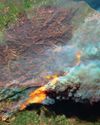
Muse Science Magazine for Kids
The Miller NEW Normal
WHAT TODAY’S WILDFIRES TELL US ABOUT OUR FUTURE
8 mins
Muse July 2025: The Story Behind Wildfires
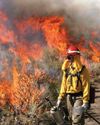
Muse Science Magazine for Kids
WOMEN AND FIREFIGHTING: A GOOD FIT
Jessica Gardetto is a firefighter. Her father was, too. “I grew up with my dad coming home smelling like wildfire and covered in soot,” she says.
1 min
Muse July 2025: The Story Behind Wildfires
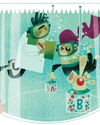
Muse Science Magazine for Kids
What is happening on your fingertips when they get all wrinkly in a hot tub?
—Felix G., age 10, Montana
1 mins
Muse July 2025: The Story Behind Wildfires

Muse Science Magazine for Kids
WHEN the SMOKE CLEARS
THE LINGERING EFFECTS OF THE RECENT PACIFIC PALISADES AND ALTADENA EATON FIRES
6 mins
Muse July 2025: The Story Behind Wildfires

Muse Science Magazine for Kids
PICKING TEAMS
Keep it fair with a strategy that relies on geometry.
2 mins
Muse July 2025: The Story Behind Wildfires
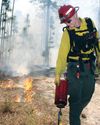
Muse Science Magazine for Kids
SHAN CAMMACK
WILDLIFE BIOLOGIST AND FIRE SAFETY OFFICER
3 mins
Muse July 2025: The Story Behind Wildfires
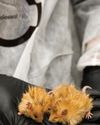
Muse Science Magazine for Kids
Scientists Create Mice With Woolly Mammoth-Like Fur
RESEARCHERS AT A COMPANY IN TEXAS ARE WORKING TO CREATE A LIVING ANIMAL THAT RESEMBLES THE EXTINCT WOOLLY MAMMOTH. Recently, they produced mice with traits of the large mammal. The mice all have coats with mammoth-like fur, and some of the small mammals also have genes that help them store fat. Both features would help the animals survive in the cold Arctic, where the woolly mammoth once lived.
1 min
Muse July 2025: The Story Behind Wildfires

Muse Science Magazine for Kids
Cool Sunshade Added to the Nancy Roman Space Telescope
THE NANCY ROMAN SPACE TELESCOPE IS A NEW TELESCOPE THAT NASA IS BUILDING AND WILL LAUNCH INTO SPACE, LIKELY IN EARLY 2027.
1 min
Muse July 2025: The Story Behind Wildfires
Translate
Change font size
